Cheryl Cummings
Long-horned bee
Cheryl Cummings
Cheryl Cummings
Long-horned bee
Most gardens have a lawn, but before getting out the mower this year, let’s think, are the first daisies and dandelion flowers trying to tell us something? We might like to see a perfectly manicured grass monoculture, but for our gardens’ insects the wildflowers provide some of their earliest meals and the better fed the insects are, the better fed the birds will be too. Left to grow longer, with paths mown through for us to better enjoy them, our meadow lawns become food and shelter for wildlife and so much more interesting for us too.
Every garden has weeds to eradicate, or so we have traditionally been led to believe! Do we have to pull out those wild flowers which love our garden soil so much better than the plants we choose to put in their place? Our native plants love our conditions, they are perfect for our pollinating insects and together they fill their niches within which they have evolved. That’s not to say we can’t have those ornamental plants we love too, both can live happily side by side; diversity in planting is better for biodiversity.
The best wild flower in my garden is bush vetch, Vicia sepium. Some would say it’s the worst weed because it scrambles everywhere, through the borders and in the lawn, it’s flowers are shades of pinky purple and it looks glorious with almost anything, especially catmint. It’s a magnet for solitary bees, attracting the rare long horned bee Eucera longicornis to my garden. Would that special visitor have come to my garden if I’d weeded?
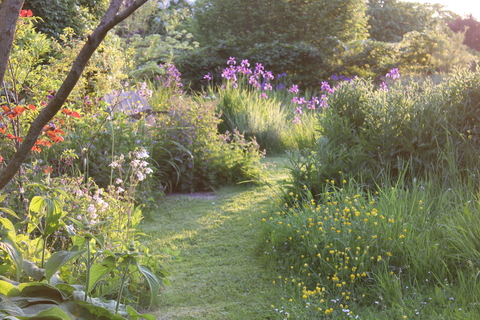
Cheryl Cummings
A mown path through a meadow lawn, it's destination a bench overlooking a wildlife pond surrounded by Iris sibirica.
Traditionally the term has been a catch all word to describe small caterpillars and other wriggling and leaf nibbling creatures, often the larvae of the moths and butterflies we love to see and which are perfect food for baby birds. They’re an essential part of our gardens’ food webs, part of the transfer of the sun’s energy, used by plants to grow their foliage, eaten by these little creatures and passed on though their bodies as they’re eaten by larger insects, amphibians, reptiles and birds.
A few holes in leaves show us that nature is working well and why herbicides and pesticides will never have a place in my garden and I hope not in yours either.
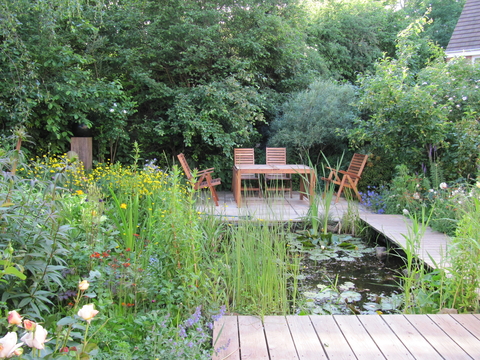
Cheryl Cummings
A small contemporary estate house garden with a wildlife pond at its heart, seating areas around and mixed native and ornamental planting perfect for the heavy clay soil.
Gardening with nature saves time, money and effort but if we’re feeling in need of some exercise, creating a pond is a great project for the upcoming warmer days. Pond liners are so much easier to handle when they’re warmed up by the sun!
Planted with a few native oxygenators, marginals and floating plants, more will soon colonise and placed near a favourite seat or in full view from a window, we can be up close and personal with all the wildlife our wetland habitat will attract.
Damsel and dragonflies, frogs, newts, bathing birds and bats swooping low as dusk falls, it’s going to be a wild and very exciting spring in the garden!
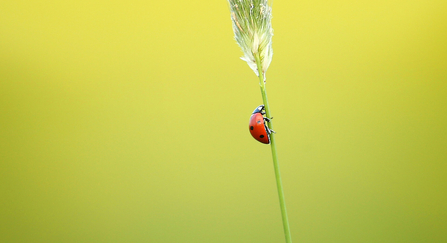
Jon Hawkins, Surrey Hills Photography
A Ladybird
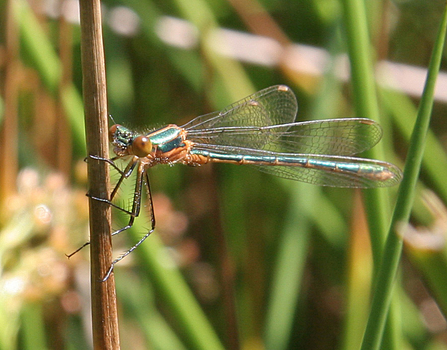
Andy Karran
An Emerald Damselfly
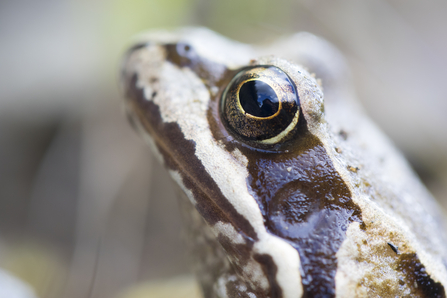
Chris Lawrence
Common frog